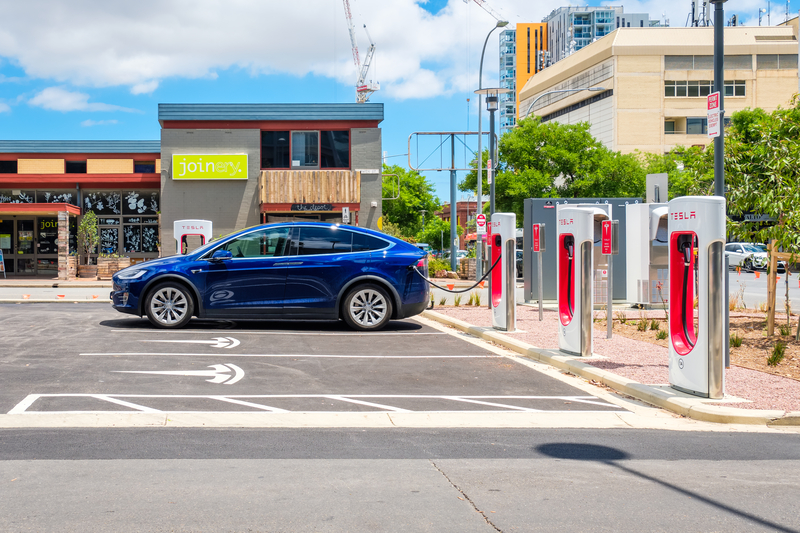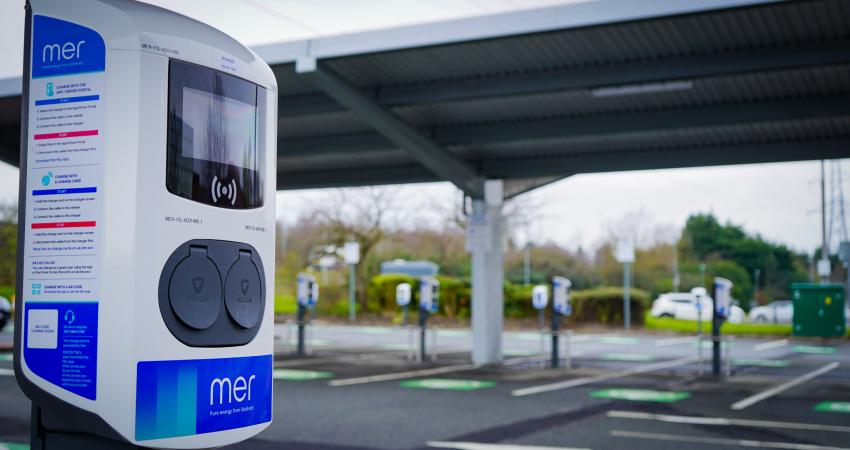
Funds that are currently being used for EV manufacturing should be diverted towards ensuring the appropriate infrastructure is in place
That is the view of Robert Kettyle, chief operating officer at US-based Simply Fuel Solutions, which provides fuel management solutions for fleet operators
"The challenges that we see every day with our energy and government-related customers is that they're being challenged with having to buy vehicles before the infrastructure is ready," said Kettyle, speaking during a panel session the EV Charging Summit & Expo 2024 held recently in Las Vegas.
"The reason why ICE-based vehicles were adopted so quickly after Henry Ford put the assembly lines in is that we had a fuel product, diesel and lead gasoline, that was storable energy. There were pipelines, tanks and things to move that energy around, whereas with EVs, the poles and wires still need to be built out, and we haven't actually invested in the infrastructure.
"If we reallocate those funds that are being used to accelerate the electric vehicle manufacturing to the infrastructure, we'll able to meet those adoption targets more rapidly."
Matt Candler, founder My Next Electric which helps people switch to EVs and appliances, says that predictions estimate there will be around 26 million chargers deployed in the US by 2030. He adds that current EV deployment figures show how far there is to go in electrification.
"We've got roughly 300 million private light-duty vehicles in the US," says Candler. "One percent of those are electric right now, roughly 3 million. It has previously been projected that in 2030, 60% of new vehicles being bought will be electric. The Environmental Protection Agency (EPA) has now slashed that number in half, and thinks that we'll be close to 30% adoption [by 2030]."
In March this year, the US Department of Energy predicted that, by 2030, the US will need 28 million EV charging ports to support 33 million EVs.
Gas stations an ideal location for infrastructure?
Gas station advocates in the US say that these locations are ideal for the rollout of critical EV charging infrastructure, but they are currently competing on an uneven playing field with the energy utilities.
Ryan McKinnon is spokesman for the Charge Ahead Partnership, a coalition of food retailers, convenience stores, and grocery stores across the US that want to get into EV charging business.
McKinnon says concerns around range and ability to recharge is the biggest issue preventing people moving from an ICE vehicle to an EV.
"People worry about not being able to go on a road trip to visit their grandma because their car's going to die, so that public fast-charging infrastructure is such a huge need in America right now," he says. "We've seen the NEVI program rolled out, which is good. But NEVI's just a drop in the bucket in terms of what the country needs.
"The goal of our organization is to lift some of the barriers that currently prevent gas stations, whether big or just mom-and-pop operations, from getting into EV charging because there's a lot of roadblocks in their way. If we want to have the high-speed EV charging infrastructure that the country's going to need, we need lots of those fuel retailers to switch over to off-grid EV charging. Our focus is really on that public fast charging."
McKinnon says that, among members of his coalition of gas station retailers, their perspective is fairly standard in saying that the government needs to remove the barriers that make it impossible for them to compete in the EV charging space.
"Right now, those barriers largely run in the form of utility competition," he states. "All over the country, in different states, electric utilities are using rate payer funds....in order to build, own, and operate utility charging stations."
He said his coalition's members will not stand the cost of investing in high-speed charger at their gas stations in these circumstances: "They are going to look at that and say 'I'm not going to invest a million dollars to put a high-speed charger in a gas station if I have a power company that can undercut me and put a charger across the street and charge a fraction of what I'm charging, not market rates, and be using rate payer funds to fund the entire thing'.
"So from our perspective, the role of the government is we need policy makers to realize that this is a real threat, that the folks who already own real estate and are best equipped to offer the service are the gas stations on every corner of every main street and every interstate exit. They already have the locations, they have the amenities, people are used to going there, people are comfortable going to a gas station at 3 o'clock in the morning. They're not comfortable going to the back of an apartment complex to use a power company charging station at 3 o'clock in the morning.
"So those who are best equipped to offer the service are being kept out of it by aggressive utility monopolization of this new marketplace."
McKinnon says that the solution to this is for policy makers need to put in place policies on a state-by-state basis that tell utilities to "stay in your lane, generate and distribute the electricity, get the power out there, but allow the private marketplace to come in and actually serve the customers. And from our perspective, that's what needs to happen in terms of government activity to most rapidly deploy charging stations across the country."
Regulatory compliance
Paul Hernandez, public policy & government relations at EV charging company Voltera, said his chief area of attention in advancing the rollout of EVs and the required infrastructure is in the creation of policies that can enhance regulatory compliance.
"Historically, what's happening in this setting is that policy generally takes the form of direct regulation, and that alone doesn't necessarily get us to the final destination," says Hernandez. He adds that incentives alone are not enough to entice the relevant stakeholders in EV charging to move towards compliance and that "markers" need to be put in the ground to advance regulation and the move towards electrification
Hernandez says a good example of such markers is the U.S. Environmental Protection Agency (EPA) announcement on March 20 2024, of final national pollution standards for passenger cars, light-duty trucks, and medium-duty vehicles for model years 2027 through 2032 and beyond. The EPA says these standards will avoid more than 7 billion tons of carbon emissions and provide nearly US$100bn of annual net benefits to society, including US$13bn of annual public health benefits due to improved air quality, and US$62bn in reduced annual fuel costs, and maintenance and repair costs for drivers.
Commenting on the EPA announcement around clean vehicle standards, Henandez said: "I'm excited to see additional active policies that can help us formulate a path creatively to achieve our future objectives."











